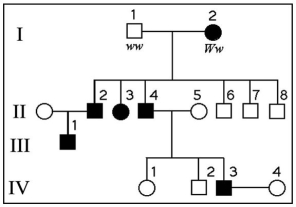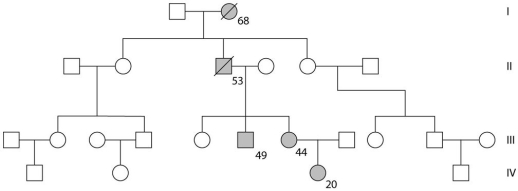A) a multiple allelic system
B) sex linkage
C) codominance
D) incomplete dominance
E) epistasis
Correct Answer

verified
Correct Answer
verified
Multiple Choice
The fact that all seven of the pea plant traits studied by Mendel obeyed the principle of independent assortment most probably indicates which of the following?
A) None of the traits obeyed the law of segregation.
B) The diploid number of chromosomes in the pea plants was 7.
C) All of the genes controlling the traits were located on the same chromosome.
D) All of the genes controlling the traits behaved as if they were on different chromosomes.
E) The formation of gametes in plants occurs by mitosis only.
Correct Answer

verified
D
Correct Answer
verified
Multiple Choice
When both traits are exhibited in the phenotype, it is said that the alleles display
A) co-dominance.
B) incomplete dominance.
C) complete dominance.
D) recessive traits.
E) gene silencing.
Correct Answer

verified
Correct Answer
verified
Multiple Choice
Given the parents AABBCc × AabbCc, assume simple dominance for each trait and independent assortment. What proportion of the progeny will be expected to phenotypically resemble the first parent?
A) 1/4
B) 1/8
C) 3/4
D) 3/8
E) 1
Correct Answer

verified
Correct Answer
verified
Multiple Choice
The following questions refer to the pedigree chart in the figure below for a family, some of whose members exhibit the dominant trait, W. Affected individuals are indicated by a dark square or circle.
 -What is the genotype of individual II-5?
-What is the genotype of individual II-5?
A) WW
B) Ww
C) ww
D) WW or ww
E) ww or Ww
Correct Answer

verified
Correct Answer
verified
Multiple Choice
Use the following pedigree shown below for a family in which dark-shaded symbols represent individuals with one of the two major types of colon cancer. Numbers under the symbols are the individual's age at the time of diagnosis.
 -From this pedigree, how does this trait seem to be inherited?
-From this pedigree, how does this trait seem to be inherited?
A) from mothers
B) as an autosomal recessive
C) as a result of epistasis
D) as an autosomal dominant
E) as an incomplete dominant
Correct Answer

verified
Correct Answer
verified
Multiple Choice
Mendel's second law of independent assortment has its basis in which of the following events of meiosis I?
A) synapsis of homologous chromosomes
B) crossing over
C) alignment of tetrads at the equator
D) separation of homologues at anaphase
E) separation of cells at telophase
Correct Answer

verified
Correct Answer
verified
Multiple Choice
Use the following information to answer the questions below.
A certain (hypothetical) organism is diploid, has either blue or orange wings as the consequence of one of its genes on chromosome 12, and has either long or short antennae as the result of a second gene on chromosome 19, as shown in this figure.
 -A female with a paternal set of one orange and one long gene chromosome and a maternal set comprised of one blue and one short gene chromosome is expected to produce which of the following types of eggs after meiosis?
-A female with a paternal set of one orange and one long gene chromosome and a maternal set comprised of one blue and one short gene chromosome is expected to produce which of the following types of eggs after meiosis?
A) All eggs will have maternal types of gene combinations.
B) All eggs will have paternal types of gene combinations.
C) Half the eggs will have maternal and half will have paternal combinations.
D) Each egg has a one-fourth chance of having either blue long, blue short, orange long, or orange short combinations.
E) Each egg has a three-fourths chance of having blue long, one-fourth blue short, three-fourths orange long, or one-fourth orange short combinations.
Correct Answer

verified
Correct Answer
verified
Multiple Choice
The individual with genotype AaBbCCDdEE can make many kinds of gametes. Which of the following is the major reason?
A) segregation of maternal and paternal alleles
B) recurrent mutations forming new alleles
C) crossing over during prophase I
D) different possible alignments of chromosomes
E) the tendency for dominant alleles to segregate together
Correct Answer

verified
Correct Answer
verified
Multiple Choice
An obstetrician knows that one of her patients is a pregnant woman whose fetus is at risk for a serious disorder that is detectable biochemically in fetal cells. The obstetrician would most reasonably offer which of the following procedures to her patient?
A) CVS
B) ultrasound imaging
C) amniocentesis
D) blood transfusion
E) X-ray
Correct Answer

verified
Correct Answer
verified
Multiple Choice
Use the information given here to answer the following questions. Feather colour in budgies is determined by two different genes, Y and B, one for pigment on the outside and one for the inside of the feather. YYBB, YyBB, or YYBb is green; yyBB or yyBb is blue; YYbb or Yybb is yellow; and yybb is white. -Two blue budgies were crossed. Over the years, they produced 22 offspring, 5 of which were white. What are the most likely genotypes for the two blue budgies?
A) yyBB and yyBB
B) yyBB and yyBb
C) yyBb and yyBb
D) yyBB and yybb
E) yyBb and yybb
Correct Answer

verified
Correct Answer
verified
Multiple Choice
Hydrangea plants of the same genotype are planted in a large flower garden. Some of the plants produce blue flowers and others pink flowers. This can be best explained by which of the following?
A) the knowledge that multiple alleles are involved
B) the allele for blue hydrangea being completely dominant
C) the alleles being codominant
D) the fact that a mutation has occurred
E) environmental factors such as soil pH
Correct Answer

verified
Correct Answer
verified
Multiple Choice
Why did the F₁ offspring of Mendel's classic pea cross always look like one of the two parental varieties?
A) No genes interacted to produce the parental phenotype.
B) Each allele affected phenotypic expression.
C) The traits blended together during fertilization.
D) One phenotype was completely dominant over another.
E) Different genes interacted to produce the parental phenotype.
Correct Answer

verified
Correct Answer
verified
Multiple Choice
Use the following pedigree shown below for a family in which dark-shaded symbols represent individuals with one of the two major types of colon cancer. Numbers under the symbols are the individual's age at the time of diagnosis.
 -What is the genotype of the deceased individual in generation II?
-What is the genotype of the deceased individual in generation II?
A) homozygous for a gene for colon cancer
B) homozygous for both cancer alleles from his mother
C) heterozygous for a gene for colon cancer
D) affected by the same colon cancer environmental factor as his mother
E) carrier of all of the several known genes for colon cancer
Correct Answer

verified
Correct Answer
verified
Multiple Choice
Mendel was able to draw his ideas of segregation and independent assortment because of the influence of which of the following?
A) his reading and discussion of Darwin's Origin of Species
B) the understanding of particulate inheritance he learned from renowned scientists of his time
C) his discussions of heredity with his colleagues at major universities
D) his experiments with the breeding of plants such as peas and fuchsia
E) his reading of the scientific literature current in the field
Correct Answer

verified
Correct Answer
verified
Multiple Choice
The frequency of heterozygosity for the sickle-cell anemia allele is unusually high, presumably because this reduces the frequency of malaria. Such a relationship is related to which of the following?
A) Mendel's law of independent assortment
B) Mendel's law of segregation
C) Darwin's explanation of natural selection
D) Darwin's observations of competition
E) the malarial parasite changing the allele
Correct Answer

verified
C
Correct Answer
verified
Multiple Choice
Use the following information to answer the questions below. A woman who has blood type A positive has a daughter who is type O positive and a son who is type B negative. Rh positive is a trait that shows simple dominance over Rh negative and is designated by the alleles R and r, respectively. A third gene for the MN blood group has codominant alleles M and N. -If both children are of blood type M, which of the following is possible?
A) Each parent is either M or MN.
B) Each parent must be type M.
C) Both children are heterozygous for this gene.
D) Neither parent can have the N allele.
E) The MN blood group is recessive to the ABO blood group.
Correct Answer

verified
Correct Answer
verified
Multiple Choice
Use the following information to answer the questions below. Skin colour in a certain species of fish is inherited via a single gene with four different alleles. -How many different types of gametes would be possible in this system?
A) 1
B) 2
C) 4
D) 8
E) 16
Correct Answer

verified
C
Correct Answer
verified
Multiple Choice
Refer to the following information to answer the questions below. Gene S controls the sharpness of spines in a type of cactus. Cacti with the dominant allele, S, have sharp spines, whereas homozygous recessive ss cacti have dull spines. At the same time, a second gene, N, determines whether or not cacti have spines. Homozygous recessive nn cacti have no spines at all. -The relationship between genes S and N is an example of
A) incomplete dominance.
B) epistasis.
C) complete dominance.
D) pleiotropy.
E) codominance.
Correct Answer

verified
Correct Answer
verified
Multiple Choice
Two plants are crossed, resulting in offspring with a 3:1 ratio for a particular trait. What does this suggest?
A) that the parents were true-breeding for contrasting traits
B) that the trait shows incomplete dominance
C) that a blending of traits has occurred
D) that the parents were both heterozygous for a single trait
E) that each offspring has the same alleles for each of two traits
Correct Answer

verified
Correct Answer
verified
Showing 1 - 20 of 82
Related Exams